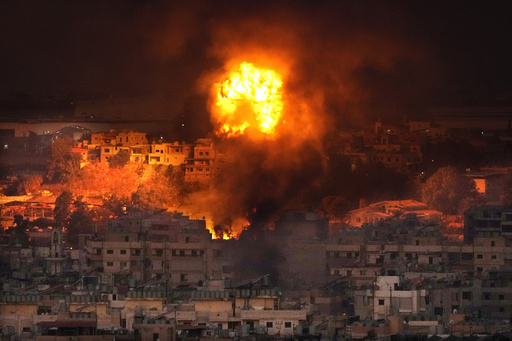A year after Hamas’ deadly assault on southern Israel, the Middle East remains engulfed in an escalating conflict with no end in sight, with Israel mounting retaliatory offensives against Hamas in the Gaza Strip and Hezbollah militants in Lebanon. The focus of Israel’s military operations has now shifted towards Lebanon, with airstrikes evolving into a significant ground incursion against Hezbollah fighters who have been launching rockets into Israel amid the Gaza conflict. Israel is also eyeing Iran, a key supporter of anti-Israel militants in the region, after enduring a substantial missile barrage from the country, promising a response that could further complicate the situation and potentially involve the U.S. and Iran-backed militants in Syria, Iraq, and Yemen.
As the war continues, Hamas and its allies are facing heavy losses, with the group’s military severely weakened, its Gaza stronghold ravaged by death and destruction, and top leaders of both Hamas and Hezbollah eliminated in daring attacks. While Israel maintains a military advantage, Prime Minister Benjamin Netanyahu is grappling with challenges as dozens of Israeli hostages remain in Hamas’ captivity, and remnants of militant groups persist in conflict zones. Netanyahu’s leadership is under scrutiny as mass protests erupt over the handling of the hostage situation, strained relations with allies, economic decline, and ongoing military operations in Gaza and Lebanon.
The ongoing war has shattered long-standing assumptions and plunged the region into unprecedented death and destruction. The conflict sparked by Hamas’ initial attack marked a turning point, resulting in a devastating toll with over 1,200 casualties, including hostages and extensive damage in Gaza. The Israeli-Palestinian conflict has witnessed its longest and deadliest phase, with Gaza bearing the brunt of the violence, leading to widespread displacement, infrastructure destruction, and loss of lives among civilians, women, and children. The situation has escalated tensions along Israel’s northern border, with a growing number of casualties and displacements on both sides due to clashes between Israel and Hezbollah.
The war’s toll extends beyond the physical devastation, affecting political dynamics and leadership within Israel and Hamas. While Netanyahu’s government faces internal unrest and external pressures, Hamas leader Yahya Sinwar navigates mounting international scrutiny and demands for a ceasefire. The prolonged conflict has strained Israel’s social fabric, rekindling divisions between political factions and raising uncertainties about the future of the region. With no swift resolution in sight, the war’s repercussions continue to unfold, leaving populations displaced, hostages held, and regional stability in jeopardy. Diplomatic efforts have faltered, and traditional approaches to Mideast peace have proven ineffectual, requiring a reevaluation of strategies and international involvement to navigate the complexities of the ongoing conflict.


